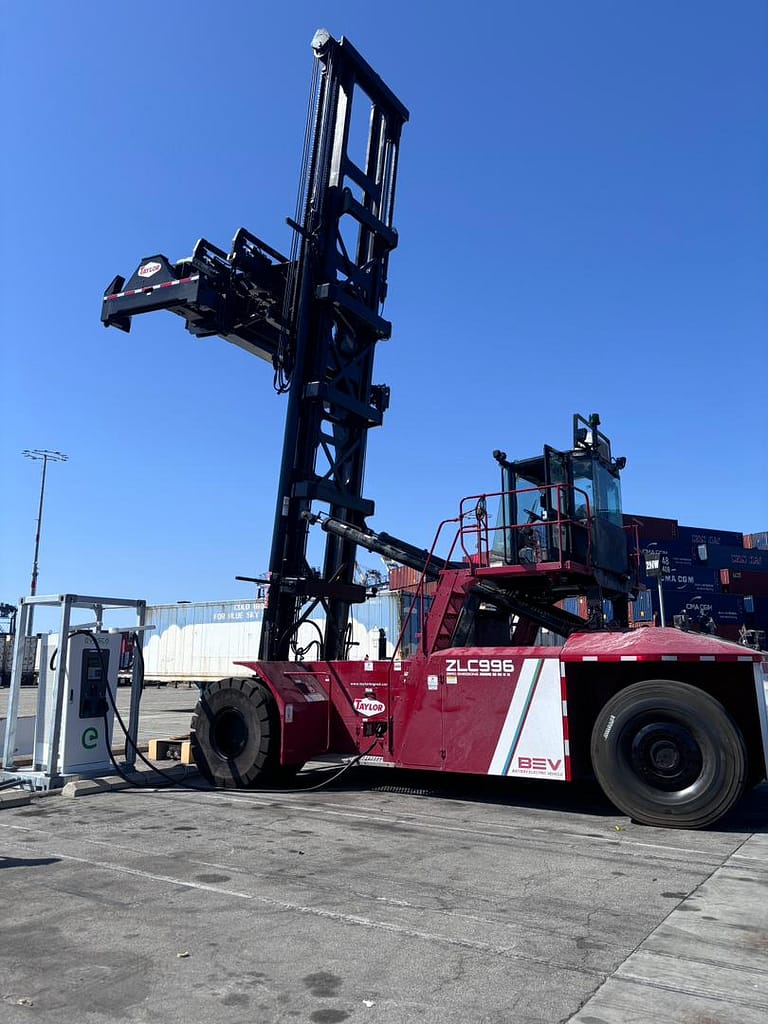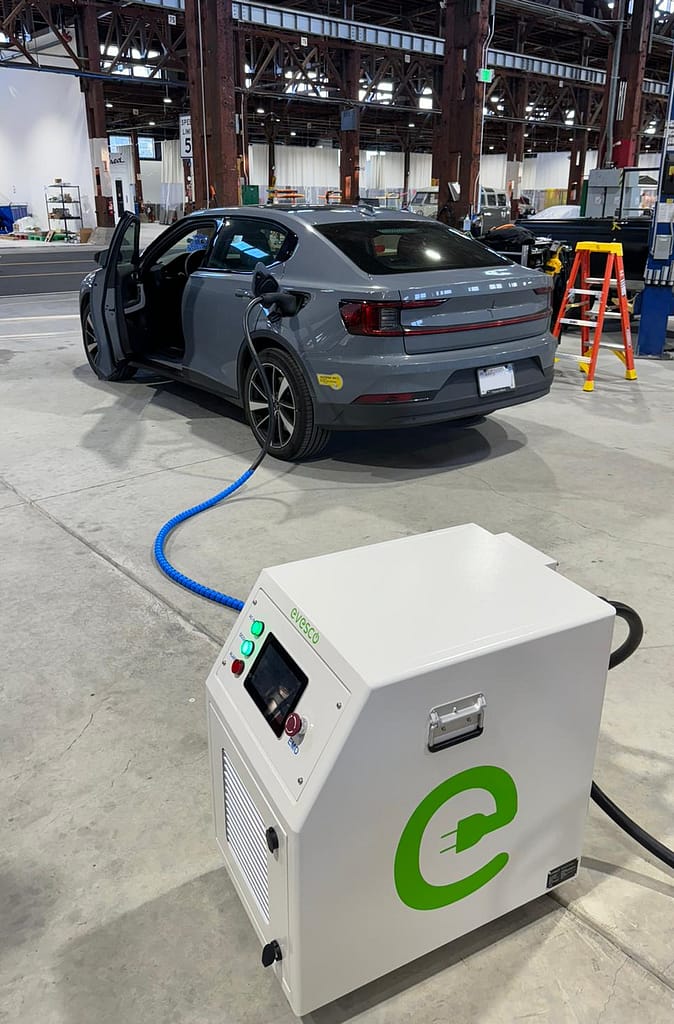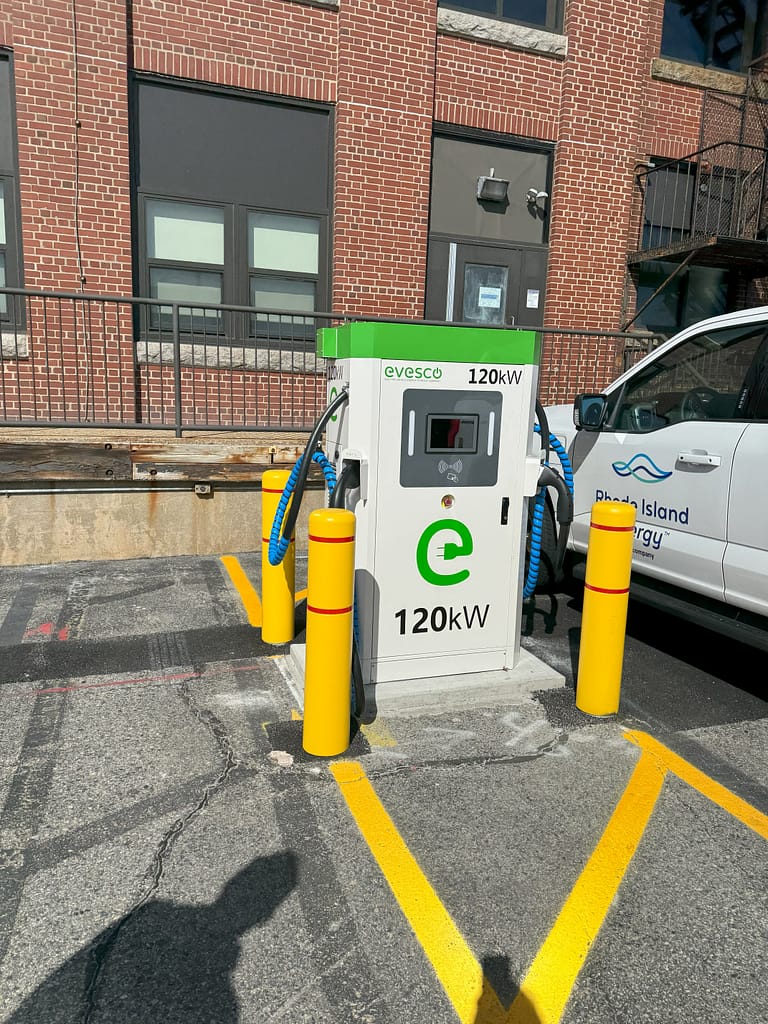This post was originally published on Power Sonic
The transportation industry is undergoing a revolutionary transformation. As environmental concerns and regulatory pressures increase, businesses are exploring sustainable alternatives to traditional internal combustion engines (ICE). Fleet electrification has emerged as a critical strategy in this transition, promising significant environmental benefits and fleet operations efficiency.
What is Fleet Electrification?
Fleet electrification refers to transitioning vehicle fleets from internal combustion engines (ICE) to electric vehicles (EVs). This shift is not just about replacing diesel or petrol engines with batteries; it represents a fundamental change in how businesses operate their transport and logistics functions. Over 60% of European companies see fleet electrification as a critical goal of their sustainability strategies.
Electrifying Your Fleet and the Environmental Impact
Electrifying fleets is crucial for achieving global emission reduction targets. The transportation sector accounts for 21% of global CO2 emissions. Fleet operators can significantly reduce carbon emissions by electrifying fleet vehicles, helping combat climate change, and improving air quality. Studies show fleet electrification could reduce CO2 emissions by as much as 60% compared to traditional ICE vehicles.
Fleet Electrification Benefits
- Lower cost of ownership: Despite higher initial costs, the total cost of ownership for electric fleets is generally lower. EVs have fewer moving parts, reducing maintenance and service costs. Additionally, electricity costs are lower and more stable than diesel or petrol, leading to lower running costs.
- Attract more customers: Businesses can also attract more customers by demonstrating their commitment to sustainability. A study showed that over 50% of consumers were influenced by sustainability, indicating they were willing to pay more for products and services from companies committed to positive social value and are environmentally friendly.
- Future-Prof Operations: Transitioning to EV fleet vehicles is also a future-proof strategy. With the European Union planning to ban the sale of new petrol and diesel cars by 2035 and several US states, including California, aiming for the same by 2035, fleet electrification is becoming inevitable.
Types of Fleet Electrification
A wide range of sectors and vehicle types are undergoing electrification, each at different stages. Here’s a look at the various types of fleet vehicles that are transitioning to electric power:
Car and Light Commercial Electrification
The electrification of car fleets and light commercial vehicles leads to the charge in fleets transitioning to electric. Small commercial fleets include salespeople, engineers, taxi services, healthcare workers, and delivery companies. Electric cars and vans offer significant benefits, such as lower operating costs, reduced maintenance, and compliance with environmental regulations. Companies like NationalGrid, Amazon, and Swiss Post have already started to electrify fleet vehicles to improve sustainability and operational efficiency; a recent report revealed that leading organizations had boosted their car fleets to 630,000 EVs globally.
Truck Electrification
Organizations that utilize trucks are beginning to embrace electric trucks for long-haul and short-haul routes. Electric trucks offer significant benefits in terms of reduced fuel costs and lower emissions. Major companies like Tesla, Daimler, and Volvo are already producing electric trucks with substantial range capabilities. These trucks are ideal for routes where charging infrastructure is available, reducing operational costs and minimizing environmental impact. High-powered DC fast charging stations are critical for charging electric trucks as they demand high power to charge their large batteries quickly so they can get back on the road.
Bus Fleet Electrification
Public transportation systems are leading the way in heavy-fleet electrification. Electric buses are becoming common in cities, offering zero-emission travel and lower operational costs. Electric buses also reduce noise pollution and improve air quality, making urban areas more livable. The European e-bus market has shown significant strides in bus electrification, with 42% of the city bus market being electric; in the United States, the e-bus market has experienced a 66% increase since 2021.
Port Electrification
Ports are critical hubs for global trade, and electrifying port-handling equipment such as cranes, yard trucks, and container handlers can significantly reduce emissions. Electric port equipment improves air quality in port cities and offers quieter operations, enhancing the working environment. Electrification in ports is advancing with robust and high-capacity electric machinery development. The Port of Los Angeles recently unveiled the world’s first fully electric top handlers for port operations. EVESCO was fortunate enough to work on the project and provide the needed charging infrastructure to keep these top handlers charged.

eGSE (Electric Ground Support Equipment)
Airports are increasingly electrifying their ground support equipment fleets, including baggage tugs, aircraft tow tractors, and passenger transport vehicles. eGSE helps reduce airport emissions and noise pollution, contributing to a more sustainable and pleasant environment for travelers and airport staff. Major airports and airlines worldwide are investing in electrifying GSE and supporting charging infrastructure. Due to the different charging requirements of ground support equipment and the limited power available, a multifaceted approach is required to establish the most efficient fleet electrification strategy, which may include various charging station types and energy storage systems.
Electrification of Construction and Mining Vehicles
The construction and mining industries are adopting electric vehicles to improve sustainability and reduce operating costs. Electric excavators, loaders, and dump trucks will soon become more common on construction sites and mining operations. These heavy-duty electric vehicles offer reduced emissions, lower fuel costs, and quieter operation, making them suitable for urban construction and environmentally sensitive areas. In 2023, six of the largest ten construction original equipment manufacturers (OEMs) either had a production electric mini-excavator or a prototype.
Beyond these, numerous other fleet types are transitioning to electric power. These include agricultural vehicles, aircraft, boats, and emergency service vehicles; each sector is at different stages of fleet electrification, driven by unique operational needs and technological advancements.
Barriers to Fleet Electrification
Fleet Electrification Planning and Strategy Development
Transitioning to an electric fleet can be complex and involve comprehensive planning. Businesses must evaluate financing options, government policies and incentives, analyze usage patterns, ensure maximum vehicle uptime, and develop a supply chain that adapts to current and future needs. Robust charging infrastructure and seamless digital integration into fleet existing management tools are also crucial. A strategic plan addressing these elements is essential for successfully electrifying your fleet.
Electric Vehicle Choices
Although the range of electric vehicles is expanding, choices still need to be improved compared to traditional ICE vehicles. However, this gap is closing. As of 2023, over 370 different EV models were available in Europe, but only 40 were available in the United States.
Unpredictable Routes and Payloads
Range anxiety and battery capacity are significant concerns for fleets operating on unpredictable routes or carrying variable payloads. Modern EV batteries are becoming more energy-dense, offering longer ranges and faster charging times. However, the vehicle range must be considered along with the degradation of the battery over time so that the vehicle performs to expectations. Charging infrastructure will alos need to be considered if longer journeys are needed with multiple stops to recharge. Analyzing past vehicle journey data can help with this process.
Charging Infrastructure
One of the most significant barriers to fleet electrification is the availability of charging infrastructure. Public charging networks can be more expensive and less convenient than private ones. Challenges for depot charging include power availability and long lead times for necessary grid upgrades. Fleet operators can mitigate the grid issues by utilizing battery energy storage systems to extend the available power on site and remove the need for expensive grid upgrades.
EV Charging For Electric Fleets
The variety of EV charging needs for fleet operations requires different types of chargers:
- Level 2 stationary chargers: ideal for overnight charging at home or fleet depots. They provide a slower but steady charge that prepares vehicles for the next day.
- DC fast charging stations: Essential for quick top-ups during the day at strategic locations, significantly reducing downtime.
- Portable fast chargers: Improve operational efficiency by bringing the charger to the vehicle. These are instantly deployable, and no planning permission is needed.
- Off-grid EV charging stations: These are useful for emergency response and in remote locations with limited grid access, ensuring that fleets can operate in remote locations.


Overcoming Barriers with Fleet Electrification Planning
Strategic planning and careful analysis are essential for overcoming the barriers to fleet electrification. This includes vehicle route and usage analysis, phased transitions, and infrastructure investment. By addressing these challenges with thoughtful planning, businesses can successfully transition to electric fleets and reap the environmental and commercial benefits.
Fleet electrification represents a pivotal step forward for businesses looking to reduce their carbon footprint, align with global emission goals, and future-proof their operations. Despite initial challenges, the long-term benefits far outweigh the challenges. By investing in electric vehicles, businesses can significantly lower their total cost of ownership through reduced maintenance, service, and running costs. Moreover, embracing sustainability can attract eco-conscious customers and ensure compliance with impending regulations on ICE vehicles.
The barriers to fleet electrification, such as planning complexity, vehicle choices, and infrastructure challenges, are manageable. Advances in technology, increased availability of EV models, and strategic investment in charging infrastructure are steadily addressing these issues. Companies that approach fleet electrification with a comprehensive strategy will find themselves well-positioned to lead in the evolving market.
Fleet electrification is the way forward, and the time to start the transition is now. Start your fleet electrification journey today to stay ahead of regulations, reduce costs, and contribute to a sustainable future.

